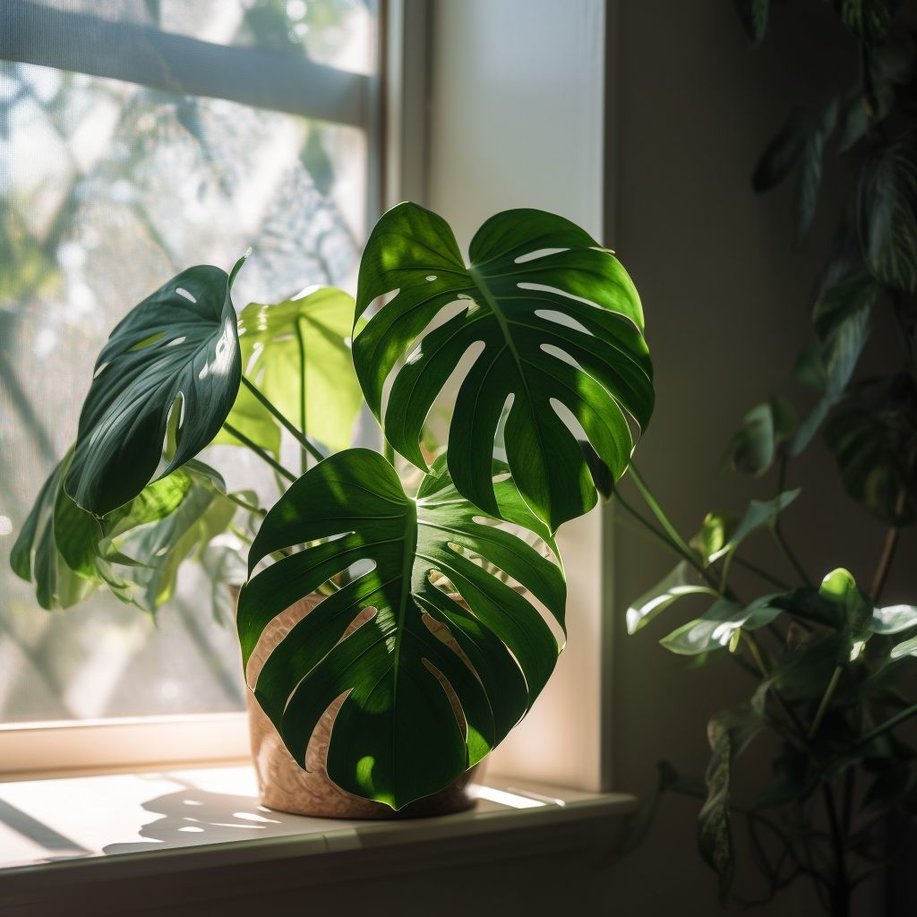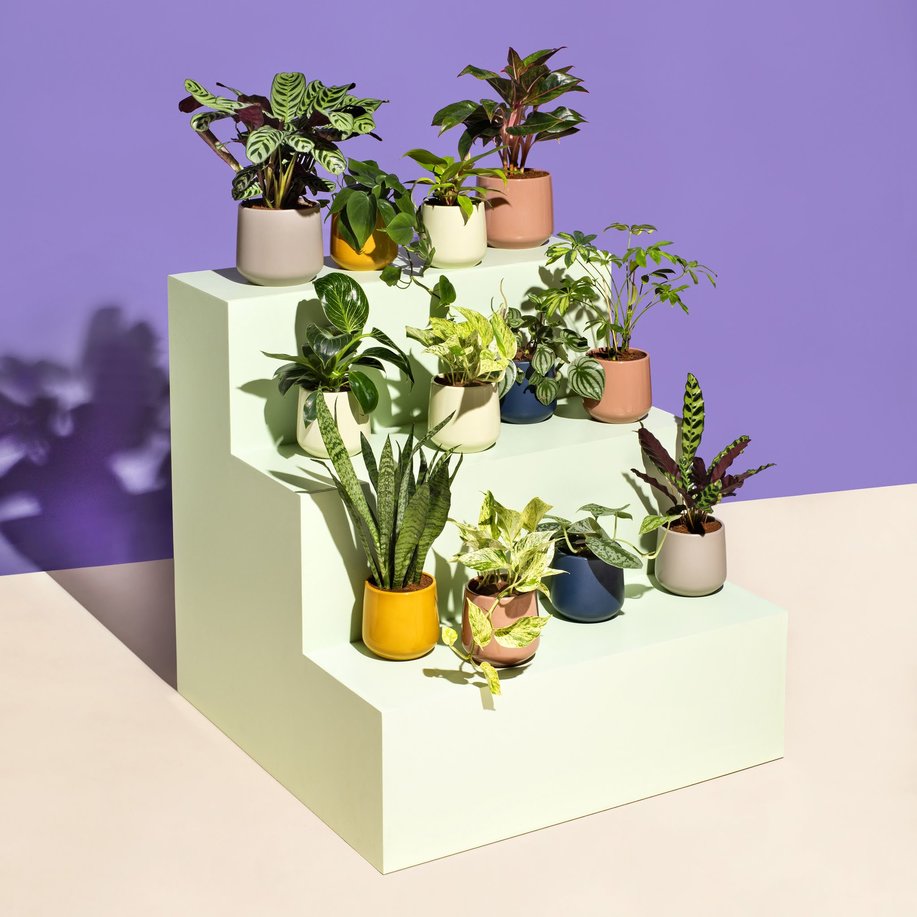What Is An Aroid Plant?
You may not know, but many of your houseplants can be categorized as aroids or in the aroid family, Araceae. This family of plants is one the more primitive and oldest of monocotyledonous plants. Their native habitats span all continents apart from Antarctica, and they are often found growing on forest floors.
Aroids have distinct characteristics that classify them as such and unique abilities that set them apart from other plants. Keep reading to discover what classifies an aroid, what plants fall under this category, and how to care for them properly.
Aroids have developed complex adaptations over time to survive in their natural habitat on the forest floor. With indirect light filtering through a veil of trees and other plants, they've adapted to thrive under diffused lighting - much like that provided by an indoor window with curtains or blinds. These remarkable species also boast extraordinary relationships with pollinators and seed dispersers, which further aid them in managing their ever-changing environments.
Their unique root system, aerial roots, and ability to grow from a single leaf or stem are among their most notable traits. Aroids feature an underground rhizome system that stores nutrient-rich reserves that allow them to quickly recover after a natural disaster such as a hurricane or prolonged drought.
What Classifies a Plant as an Aroid?
Aroid plants have specific characteristics that group them into the Araceae family. Some of these characteristics are common among aroids, and others are unique to one or two types of plants. Some aroids have interesting and unique characteristics, like the ability to generate heat. The skunk cabbage can generate heat through the stored starch in its roots. In fact, it generates enough heat in the spathe of its flower to melt snow, making it one of the first flowers to be visible in the spring. Another unique characteristic is the ability to be propagated in water. This ability is due to a natural adaptation of ancestral plants having their roots temporarily flooded due to dwelling in lowland swamps.
Aroids are herbaceous perennial plants that contain a milky or clear, strong bitter sap. Their stems are either tuberous, rhizomatous, or lianescent, and the leaves all contain a toxin called crystal raphides which contain calcium oxalate crystals. These known irritants are in the form of needle-like fibers that can cause pain in the mouth and tissue irritation if ingested. Their flowers develop on a spadix, a spike of small flowers on a fleshy stem.
Keeping them out of the reach of children and pets is essential due to the potential dangers of ingesting or touching the toxin. While ingesting this plant is not fatal, the sharp crystal raphides present in its leaves can cause discomfort and irritation to your mouth, throat, or digestive tract if swallowed.
Types of Aroid Plants
ZZ Plant
The ZZ Plant is a highly adaptable aroid that can survive with little to no natural or fluorescent light. It's drought tolerant and will adapt by shedding leaves to conserve water, but it will rebloom once they are watered. Its small, green, glossy leaves grow upward on sturdy stems. It can reach heights of three feet but grows slowly and steadily over three to five years. Plant care includes warmer temperatures, medium to bright direct light, and watering every 2-3 weeks.

Monstera
The Monstera is a split-leaf philodendron aroid with striking leaf fenestrations. This tropical plant is characterized by its large, broad dark green leaves with Swiss cheese-like holes. They grow wide and bushy over a period of two to three years before maturity. Plant care includes bright, indirect light, high humidity, and moderate watering.
Chinese Evergreen
The Chinese Evergreen is a beautiful tropical/subtropical aroid with large luminant sage-green foliage on short stems and flowers that bloom in the spring or summer. They are slow-growing, low-maintenance plants popular for their color variations ranging from red to dark green and silver. Plant care includes shade to bright light, well-drained soil, warmer temperatures with high humidity, and to be kept moist.

Pothos
Pothos is a trailing vine aroid native to the South Pacific and the Solomon Islands. These houseplants are one of the easiest to care for as they are highly adaptable to various environments. They are characterized by small, heart-shaped pointed leaves variegated with yellow, green, or white striations. They rarely flower, but when they do, they come in gold and lavender. Plant care includes partial shade to full sunlight, like well-drained, slightly acidic soil, and to be kept moist.
Aroid Plant Care
Aroid plants enjoy similar conditions with slight variations depending on the specific plant. Most are highly adaptable and can adjust to their environment and care. There are some universal tips for caring for aroid plants.
Sunlight
Aroid plants ideally like medium light but are known to tolerate low light. Some plants, like the ZZ Plant, can even thrive in fluorescent light. Due to their natural forest floor habitat, they are accustomed to partial shade and perfect dappled light. Though they can withstand three hours of direct sunlight, avoiding too much direct sunlight is recommended.

Water
Typically aroid plants should be watered once a week, but it's important to check the soil and allow the first 1-2 inches to dry out. Increase the watering frequency in the summer, but avoid overwatering, which can cause issues like root rot. To avoid the worries of under or over-watering, you can use an easyplant pot that only needs to be filled once a month and delivers water to your plant's roots when needed.
Temperature & Humidity
The ideal temperature for aroid plants is between 65-85˚F (18-30˚C). Avoid allowing the room temperature to drop below 60˚F (15˚C), as lower temperatures can slow the plant's rate of metabolism and affect its growth. Normal humidity is sufficient for all aroid plants, but some can also tolerate high humidity.
Common Issues
There are some common issues that you will see across the board when it comes to aroid plants. These issues can be prevented or remedied with proper care.
Brown, crispy leaf edges can be caused by high salts, potassium deficiency, or underwatering; wilting or curled leaves are often caused by underwatering, and yellowing or blackened stems are caused by root rot related to overwatering.
Get Your Own Aroid Plant With easyplant Today!
Aroid plants cover a wide variety of plant species in the Araceae family. They are low-maintenance plants that are relatively easy to maintain when given the proper care. Having aroid plants allows you to streamline your plant care, allowing you to have more houseplants with similar needs, and with the easyplant pot handling the watering, the demand on you for plant care is far less burdensome.
